If you’re wondering how to get toddlers to eat veggies, you’re not alone—it can be such a challenge! These sanity saving tips and perspective are here to help toddlers and big kids of all ages for happier meals. (We’ll also talk about this idea of “getting” kids to eat certain foods, because that’s really important, too.)
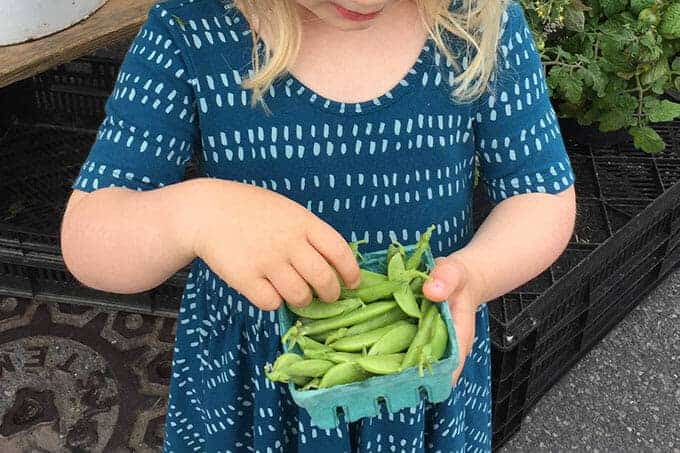
How to Get Toddlers to Eat Veggies
Vegetables are often seen as the nutritional holy grail for both adults and kids—which means we often put a LOT of pressure on our families to eat them. Or on ourselves to “get” the kids to eat them.
To start, we really have to remember that vegetables are not the only food group that matters. Yes, we do need vitamins and minerals commonly found in produce, but they are not the end all be all. And vegetables are not morally superior to fruit.
Often, our efforts to push the kids to eat vegetables (or to hide them in every recipe) can backfire and actually make the kids more resistant to trying them on their own. Kids want power and agency over their lives, so trying to force them to do anything may quickly make them not want to do it. Power struggles are a real part of this!
I would even argue that instead of trying to “get” the kids to eat more veggies, it may simply be more effective to focus on creating happier meals and food experiences—and then over time, allow the rest may more easily sort itself out. Yes, this is a more big picture approach that may not make you feel like you’re “doing” enough, but learning to eat takes time. That is normal and okay.
Knowing all of the factors at play here, the following tips are designed to both give you perspective—to hopefully help you relax–and give you actionable ways to improve mealtime dynamics around veggies with your kids.

1. Make Sure They Taste Good
The best way to help the kids eat their vegetables is to make sure they taste good to YOU first. Yes, I realize that is a fairly obvious one, but we so often forget it! We too often make baby and kids food very bland, or we make them something (homemade or store-bought) and don’t try it.
It’s possible it just isn’t flavorful enough. Some ideas that can help:
- Cook up green beans in olive oil, salt, and big pieces of garlic for flavor that can easily be picked out and moved to the side. Or try Sesame Green Beans.
- Toss carrots, broccoli, or cauliflower with a curry or peanut sauce.
- Serve veggies with dips like ketchup, ranch, guacamole, salsa, Cheese Sauce, or anything else your child likes.
- Add fats (which kids need) like olive oil, avocado oil, toasted sesame oil, butter, or coconut oil which can help the food taste better and also help our bodies absorb the vitamins.
TIP: Find my Master List of Vegetable Recipes for Kids, which is a great place to start, too.
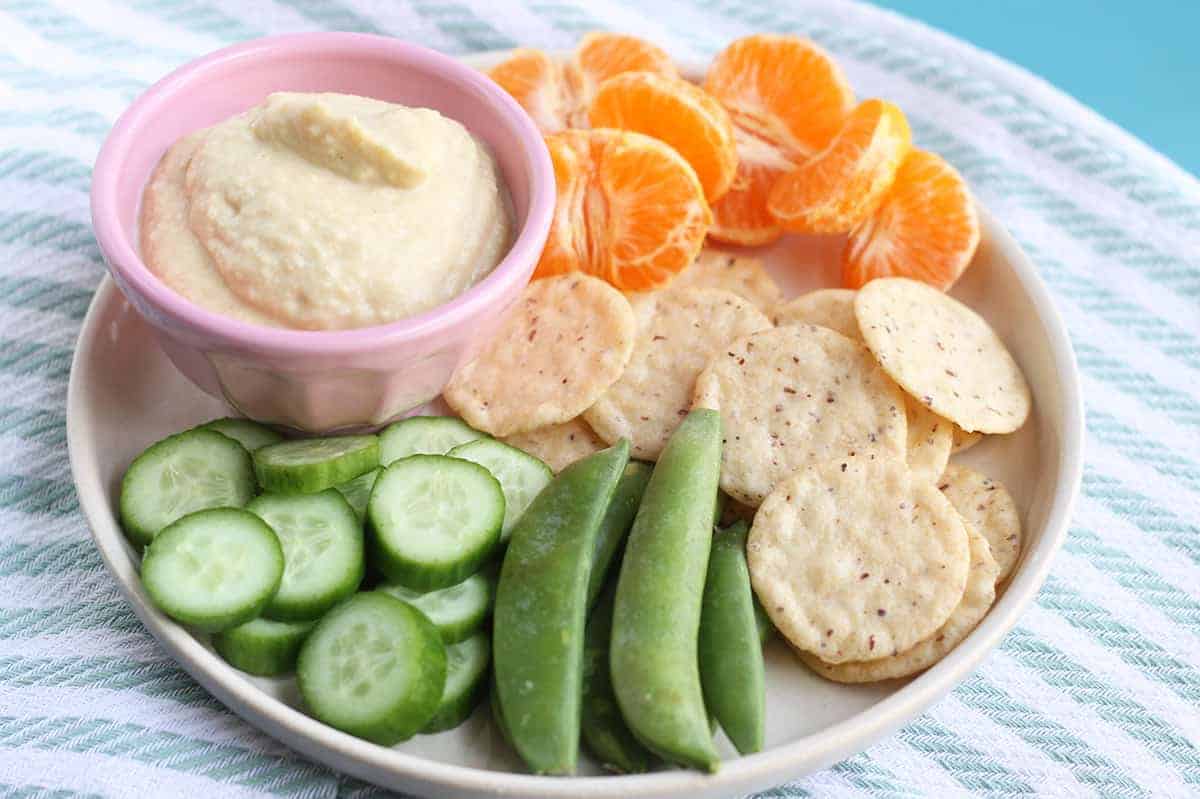
2. Serve Veggies as Appetizers
There’s no reason the kids have to eat veggies only during dinner. And it can be really helpful to take a food and serve it all by itself while you’re still cooking to meet the kids when they might be more receptive to these foods.
Often, we do this before dinner and I set out something easy I can grab (or that I already have ready for the meal) like fresh snap peas, sliced cucumber, cherry tomatoes, or even frozen veggies such as peas or sweet corn.
This almost always leads to my kids eating whatever is on offer, in part I think, because it’s sort of fun to have an appetizer to nibble on. And, this comes without the pressure that is sometimes present at the dinner table, which can lighten the mood and help, too.
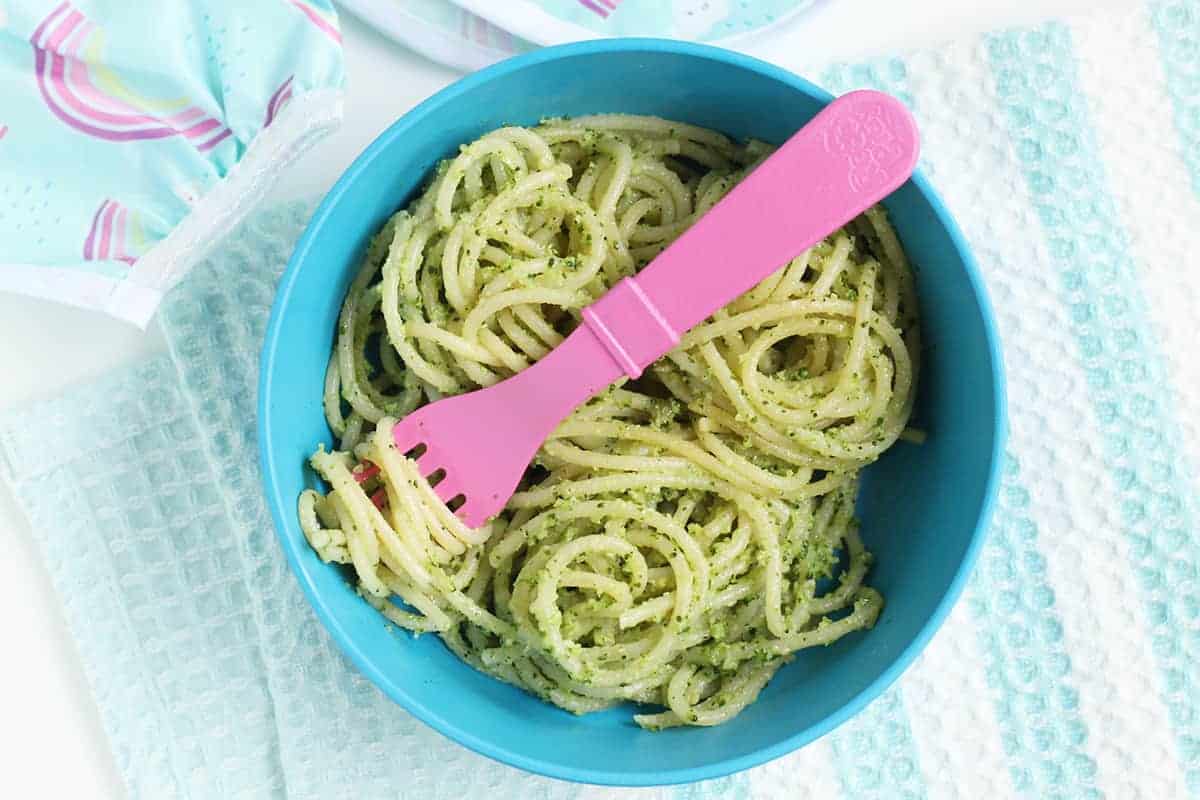
3. Change Things if the Kids Seem Bored
If you feel like you can’t entice your toddler to eat their broccoli no matter what you try, change things up and prepare the food another way. They may be bored or genuinely not like the way you usually make it. You can:
- Reach for a veggie from the same family, like cauliflower or Romanesco, and see if that helps. Try to compare the flavor or texture of the food to something you know they like if possible.
- Choose a different color of a vegetable like orange instead of red bell peppers or rainbow carrots instead of orange.
- Cut the veggies in a different shape than usual.
- Change up which veggies you serve in your go-to recipes.
- Try to buy 1-2 vegetables this week that you didn’t buy last week. You can even let the kids choose which ones to try at the store or market.
- Use a food in a recipe to add flavor and pair it with foods the kids like. Some examples include Broccoli Pesto, Spinach Muffins, and Carrot Pancakes.
- Take a break from the food and come back to it later.
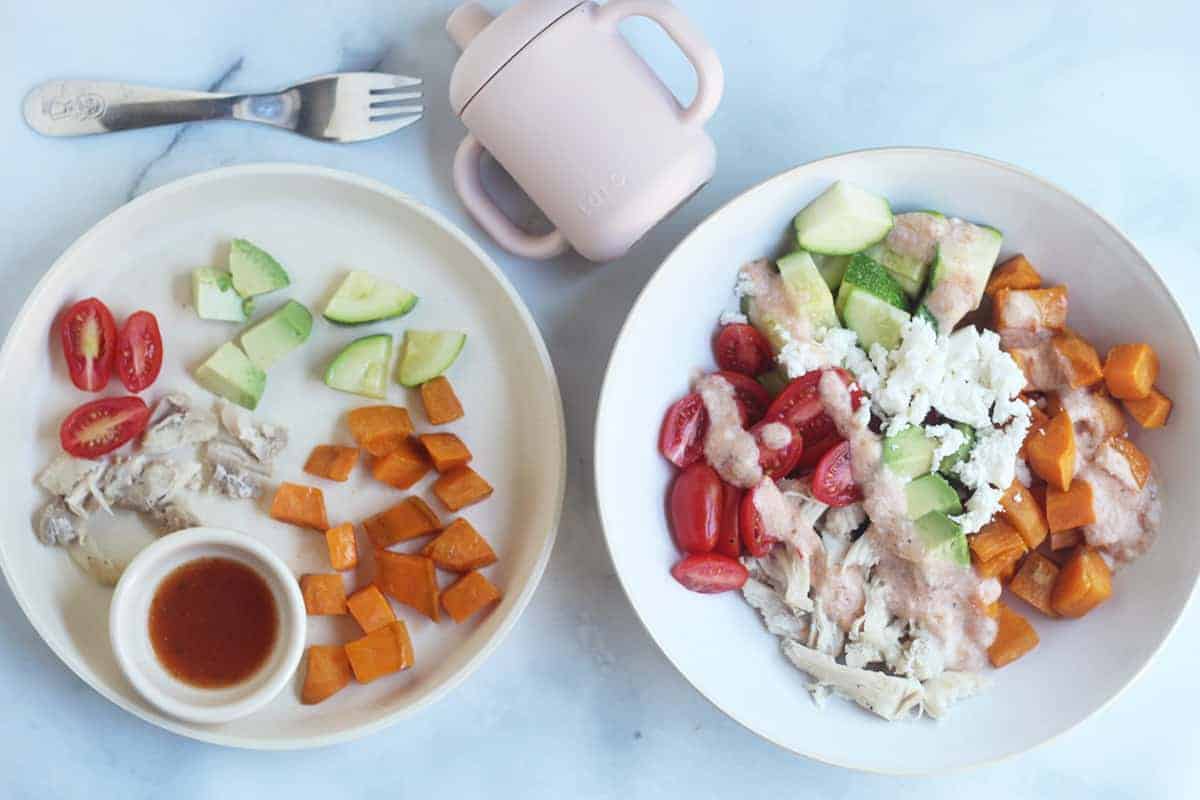
4. Model Enjoyment
I always try to remember that the kids won’t like or eat everything I serve, but a lot can be gained by eating a diverse mix of foods in front of them. It helps them to see how to eat other foods and they may want to try something because they see me enjoying it.
Kids can take a lot of exposures to try and then like new vegetables, so keep the ones you really want them to eat in regular rotation (but change up how you serve them). For me, this means I usually serve carrots, broccoli, peas, and corn each week and then I bring in new items each week (like beets, parsnips, tomatoes, and sweet potatoes) that the kids don’t always love (but I do!) to keep things interesting.
I care a lot that my kids know what these foods are so they can identify them when they’re out in the world without me. I care less about how many bites they take of each today.
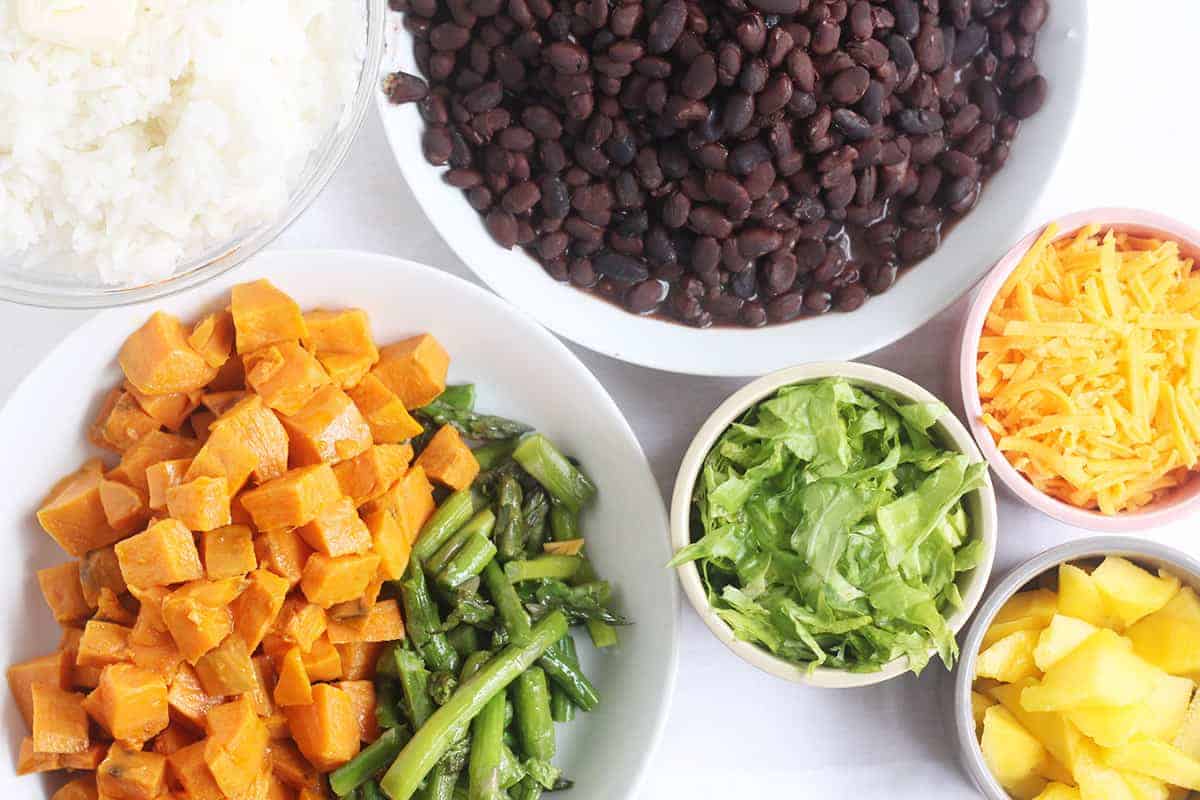
5. Eat Together
Kids learn the most from what they are exposed to at home, so keep showing them that you like to eat veggies by eating some meals together–even if everyone’s plate looks a little different. Just learning what foods are can be a really helpful base for kids as they grow and start eating meals out in the world without us.
You can even simply sit with the kids (or hover over the counter as you prep lunch or get yourself coffee, or whatever) and chat with the kids. You don’t always have to have sit down family meals to have together time.
You can keep serving sizes for kids very small (like 2 peas or one green bean) to ensure that the kids aren’t overwhelmed by what you’re offering and to reduce food waste. (Toddler serving sizes are likely smaller than you think!)
TIP: Learn more about normal picky eating here for some reassurance.
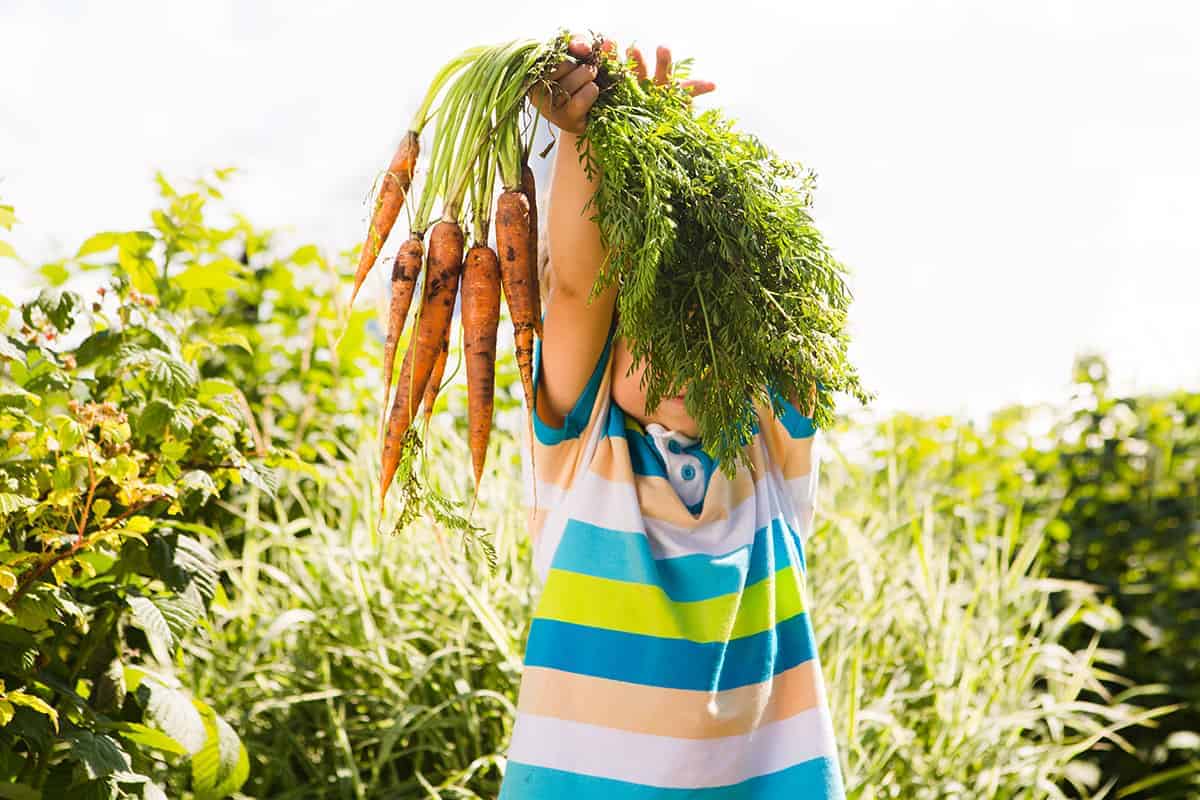
6. Let them Explore Foods Away from the Table
Interacting with foods away from the table means there is no pressure to eat the food, which may lead to really happy food experiences together. Ways to do this (without a lot of work!) may include letting the kids choose some foods at the grocery store or farmer’s market, letting them help break off broccoli florets or wash produce, reading books about food, or even watching cooking shows together.
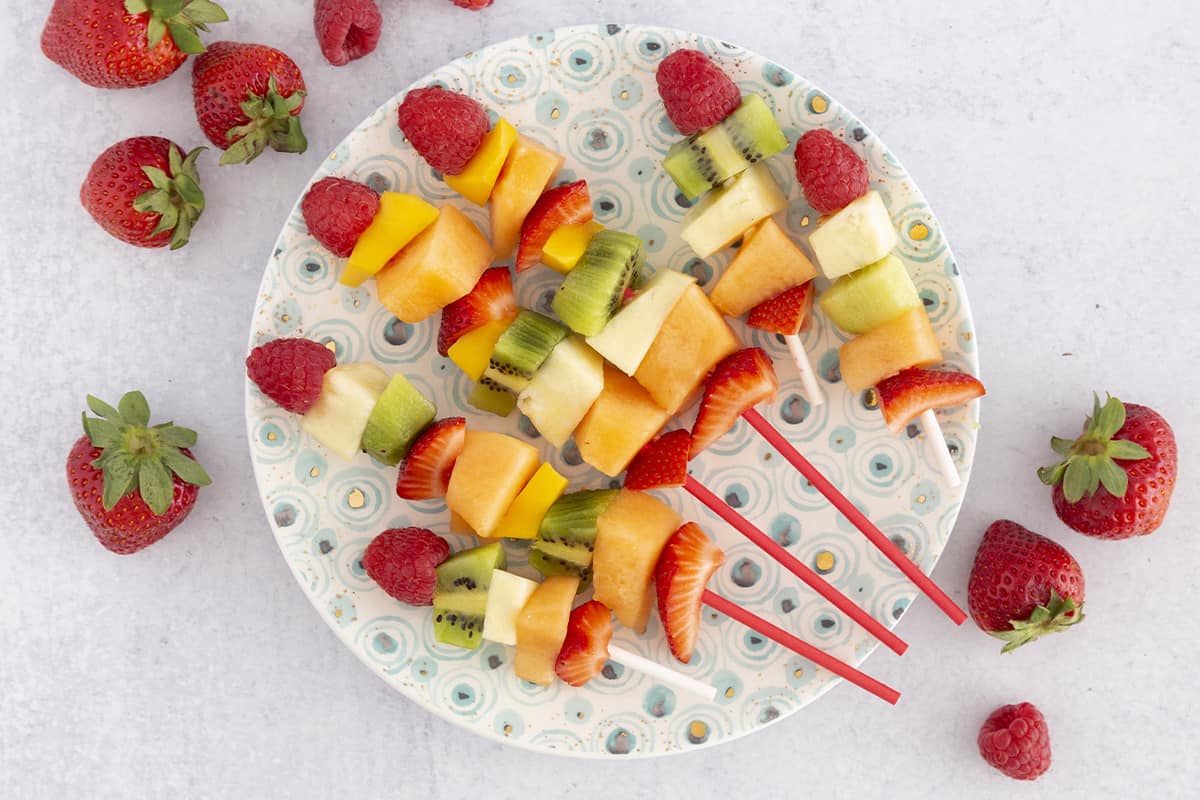
7. Rely on Fruit if Veggies are a No-Go
Fruit has many of the same nutrients as vegetables and it is a great option if the kids aren’t into veggies. Yes, it has natural sugars, which works in our favor here since it helps the foods taste great. (You do not need to worry about sugar in fruit.)
Fruits of similar colors to veggies often have similar vitamins, though just aiming for a range of them over a week or a month is an easy way to approach this.
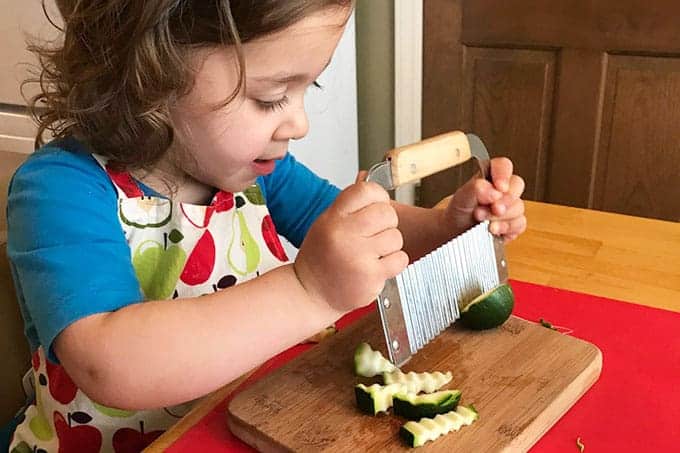
8. Give the Kids Control Where You Can
It’s easy to feel like we have to be in charge of everything about food with our kids, but the more we can find ways to gently hand the kids more control, the better. This helps kids feel in control, which can help them settle down at meals and have less of an instant reaction to push back against someone telling them what to do.
One of my main goals with meals is to find small ways to remove power struggles.
It can also help them learn age appropriate skills and habits, like learning to cut produce or spread a topping on bread when they have the fine motor skills to do so.
You don’t have to have the kids cooking full meals, but you can try letting them:
- Spread toppings on their toast or bread.
- Chop soft foods with kid-safe knives.
- Choose between two preset options for snack or parts of a meal.
- Choose their plate, cup, and utensils.
- Serve themselves from the foods you’ve offered at a meal.
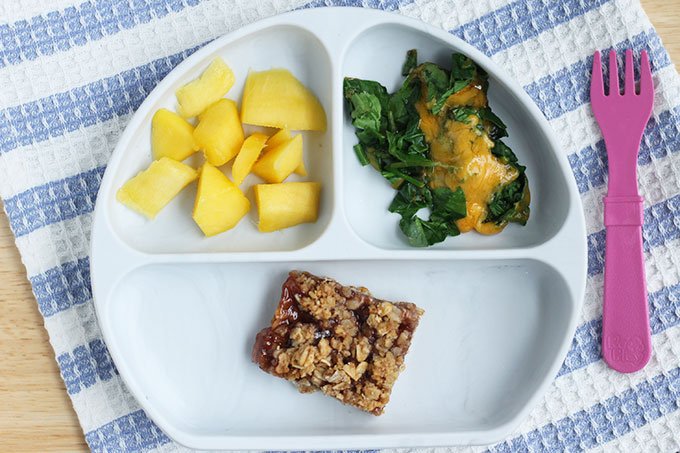
9. Try to Avoid Making Food Transactional
I want kids to be able to eat a range of foods without feeling like any of it needs to be earned or eaten in order to earn something else. Which means I’m more likely to serve dessert with dinner rather than forcing the kids to clean their plate in order to get dessert.
I want the kids to know they never have to eat certain foods or certain amounts of foods to be loved, valued, or worthy, and I want the voice in their head about food to be morally neutral and without shame or guilt.
Eating disorders are starting younger and younger and the numbers continue to rise. We have to change the way we talk about food with our kids to help protect their mental and physical health as they grow. (“46% of 9-11 year-olds are ‘sometimes’ or ‘very often’ on diets” and “35-57% of adolescent girls engage in crash dieting, fasting, self-induced vomiting, diet pills, or laxatives” according to the National Association of Anorexia Nervosa and Associated Disorders.
And it’s estimated that 26% of people with an eating disorder attempt suicide. We have to do a better job of modeling how to have a healthy relationship with food that doesn’t sacrifice our kids mental health—from the start.
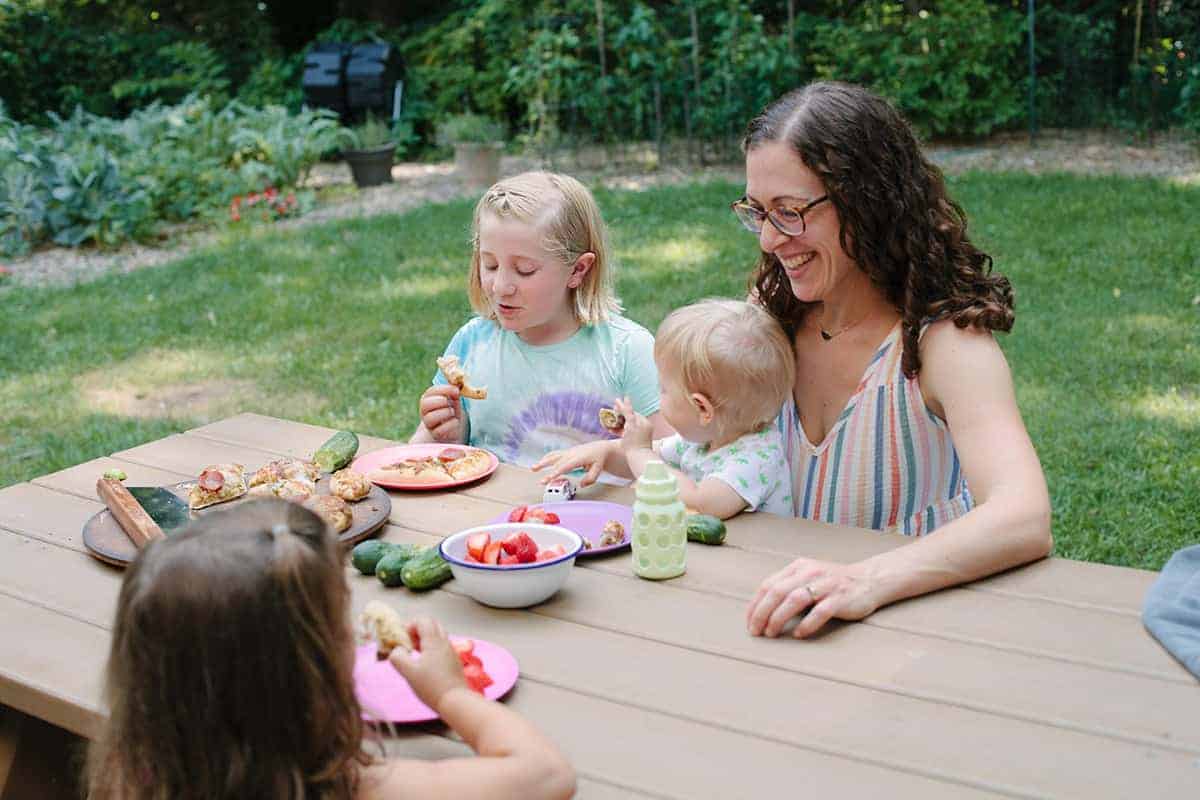
10. Talk About Other Things
This may sound counterintuitive, but talking about everything other than the food (once you explain what things are on the table as needed) can take so much pressure off the kids. Ask them about their day, tell them a story about yours, put on some music or listen to a podcast together. Meals are actually not solely about the food.
This can help us all enjoy our time at the table, no matter what anyone decides to eat or not eat.
(You can always consider a multivitamin to help reduce your worry even more.)
Related Recipes
This post was first published January 2018.


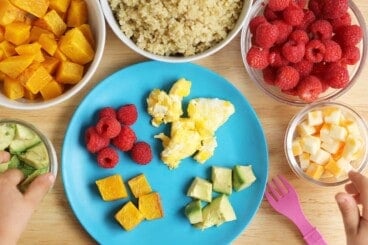




















5 Greens Your Preschooler Is Probably Not Eating,
https://www.parentcircle.com/article/5-greens-your-preschooler-is-probably-not-eating/